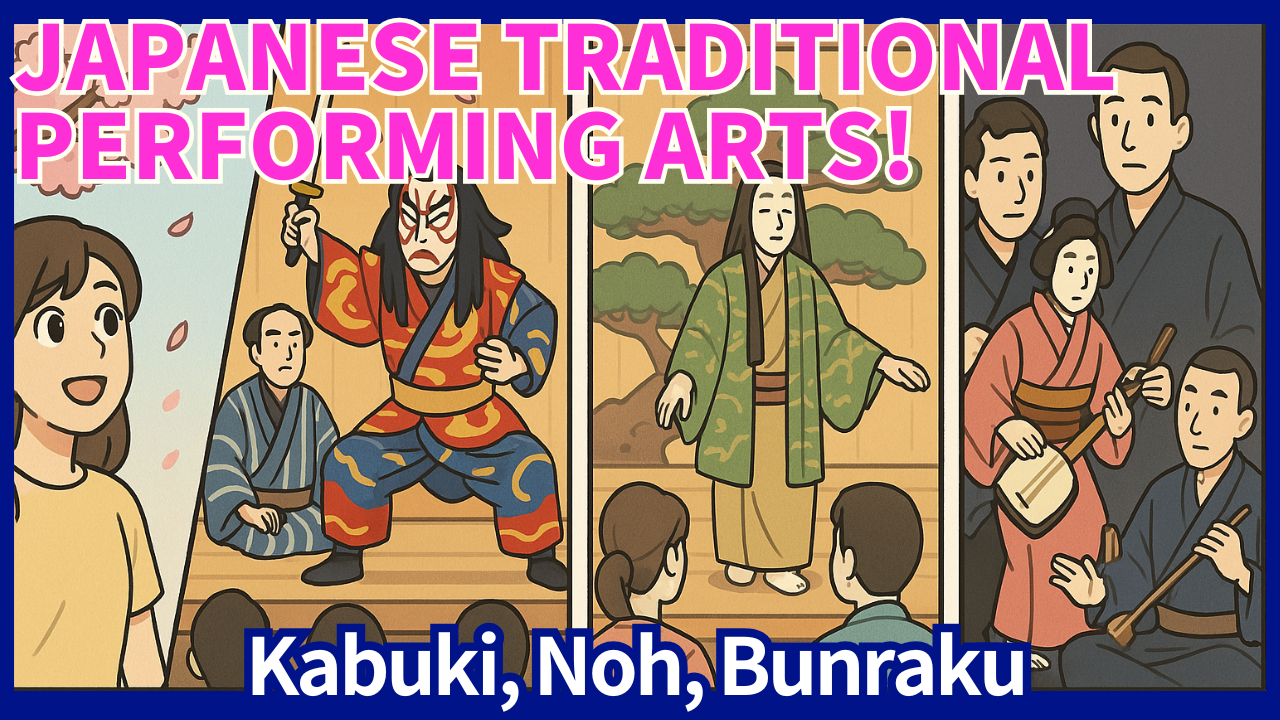Tokyo in Spring – An Invitation to Explore Traditional Arts
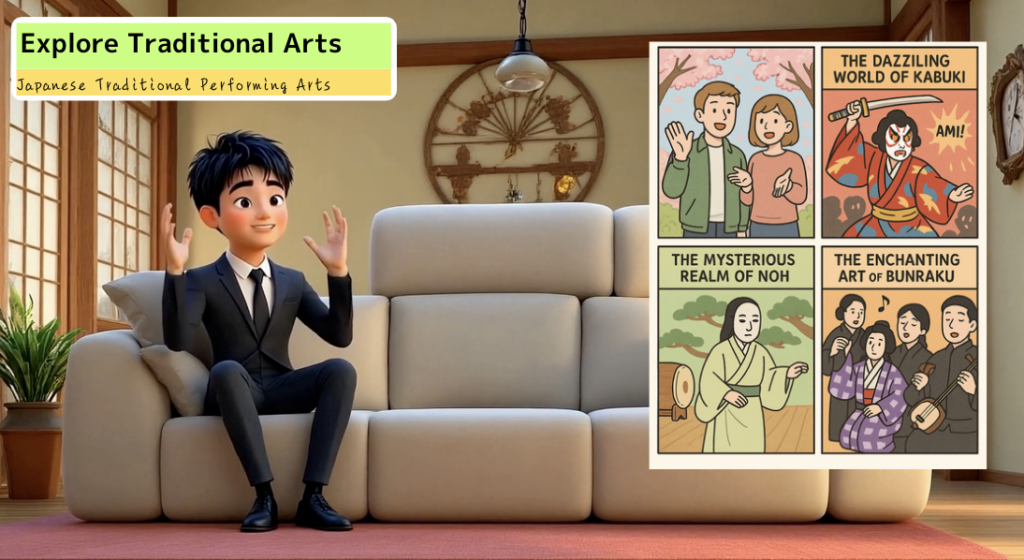
Welcome to Tokyo in spring, when the city bursts into color with cherry blossoms!
Japan is home to several unique forms of stage performance, with three of the most famous being Kabuki, Noh, and Bunraku.
All of these have been recognized by UNESCO as Intangible Cultural Heritage, which means they’re considered treasures not just by Japan, but by the world.
If you’re thinking, “Traditional arts sound complicated…” don’t worry! In this video, we’ll introduce these three performances in a simple, fun way. Whether you’re a culture buff or just in town for a good time, it’s worth discovering how these shows can add an extra spark to your Tokyo adventure. Ready to dive in?
The Dazzling World of Kabuki
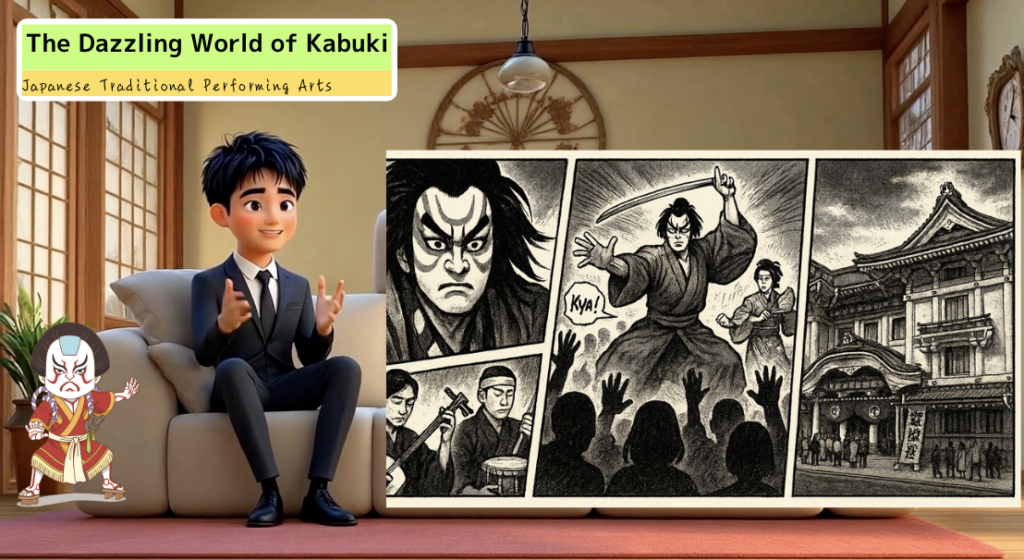
First up is Kabuki, known for its colorful costumes, dramatic makeup called kumadori, and lively sword fights and dances on stage.
Even if you’re not usually a theater-goer, Kabuki’s flashiness can be incredibly entertaining. Picture performers striking powerful poses (called mie) while the audience shouts words of encouragement—this unique call-and-response makes the entire theater feel like one big community!
The stories often revolve around historical events or epic love tales, accompanied by live shamisen music and traditional Japanese drums that create a thrilling atmosphere. Kabukiza in Ginza is the most famous Kabuki theater in Tokyo, offering shows almost every month. If you’re unsure about committing to a full performance, try the “Single Act Ticket,” which allows you to watch just one act. They also have English audio guides, so you won’t miss out on the plot.
Think of Kabuki as an early form of Japanese pop culture: bright costumes, over-the-top theatrics, and big personalities. It’s like watching a live-action anime, but centuries older!
Kabuki: Kabukiza Theatre ( Tokyo )
The Mysterious Realm of Noh
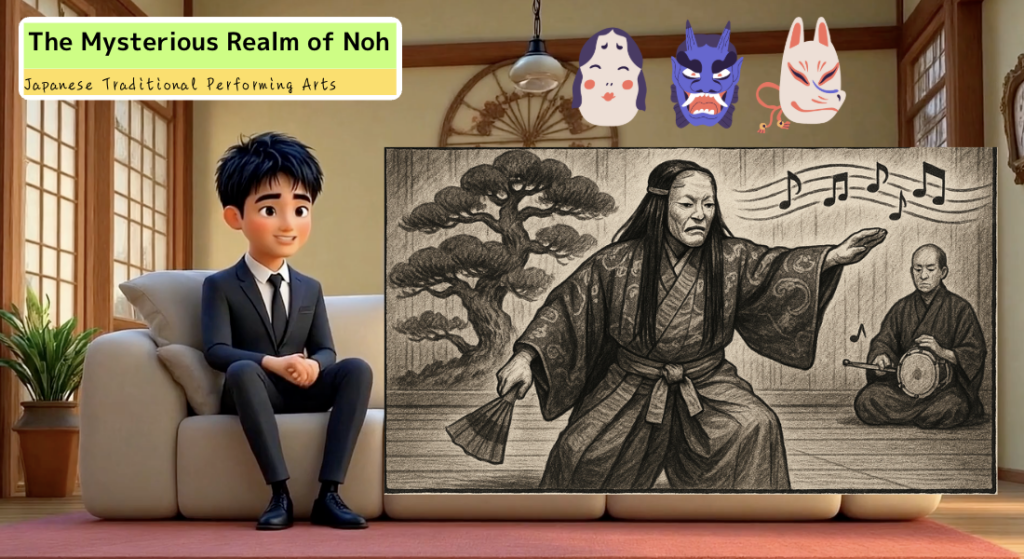
Next, we enter the quiet, spiritual world of Noh. Dating back to the 14th century, Noh is one of the oldest forms of theater in Japan. Performers wear masks that depict gods, warriors, ghosts, or even jealous demons, and use slow, deliberate movements on a simple wooden stage with a large painted pine tree in the background.
Noh relies on minimalist design—there’s no flashy set—but that’s exactly what makes it so captivating. Actors chant lines (known as utai) in a melodic style, accompanied by flutes and drums. You might find it mysterious at first, but let the rhythm of the instruments and the measured steps of the performers draw you in. In Tokyo, you can catch Noh at the National Noh Theatre in Sendagaya. They often host performances with English summaries or subtitles, so you can follow the story more easily.
If you’re into mindfulness or meditation, you might enjoy the calm, introspective vibe of Noh. There’s a hypnotic quality to the music and movement that can be surprisingly soothing.
The Enchanting Art of Bunraku
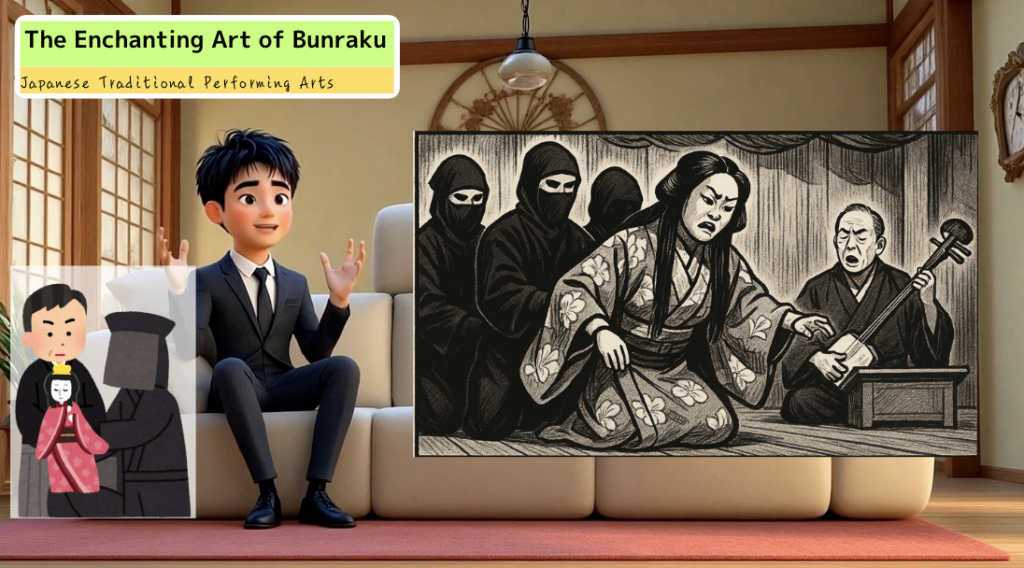
Finally, we have Bunraku, Japan’s traditional puppet theater. Forget what you know about simple puppet shows—Bunraku is a complex art form designed for adults, with a history going back to the late 17th century.
Each puppet is skillfully manipulated by three puppeteers wearing black robes: one for the head and right arm, one for the left arm, and another for the legs. Their perfectly synchronized movements make the puppets appear alive and intensely expressive.
On the side of the stage, a tayu (narrator) performs the voices of all the characters, while a shamisen player provides emotional musical accompaniment. The result? A heart-stirring blend of storytelling and music.
Many Bunraku plays share themes with Kabuki, from tales of samurai loyalty to tragic love stories. Traditionally, Tokyo audiences used to enjoy Bunraku at the National Theatre in Hanzomon, but that venue closed for reconstruction in late 2023. These days, Bunraku tours and special performances may pop up in various theaters around Tokyo, so check schedules in advance. The main home of Bunraku remains the National Bunraku Theatre in Osaka, which is definitely worth a trip if you have time.
Even if you’re more into modern entertainment, watching puppets express deep human emotions can be surprisingly moving. Think of it as one of the earliest forms of “special effects,” just done by human skill rather than CGI!
National Bunraku Theatre (Osaka : Little bit far from Tokyo )
Wrap-Up – Adding a Touch of Tradition to Your Tokyo Trip
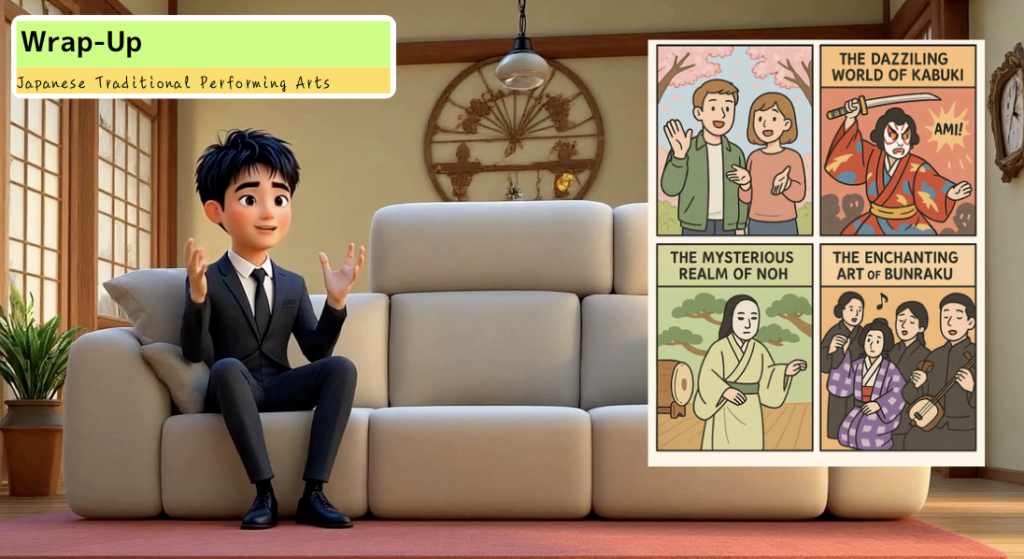
So, what do you think? Kabuki, Noh, and Bunraku each offer a unique glimpse into Japan’s soul. Their centuries-old stories, vibrant costumes, and live traditional music can be enjoyed by anyone—you don’t have to be a history buff to appreciate the spectacle.
If you’re visiting Tokyo in spring, you’ll find plenty of fun activities like cherry blossom viewing and shopping. But why not try something a bit different at night by catching a show? Even a short encounter with these time-honored performances can turn your trip into a deeper cultural adventure—one that you’ll remember long after you leave Japan. Give it a chance, and see for yourself how mesmerizing Japan’s traditional performing arts can be!
Kabuki: Kabukiza Theatre ( Tokyo )
National Bunraku Theatre (Osaka : Little bit far from Tokyo )
